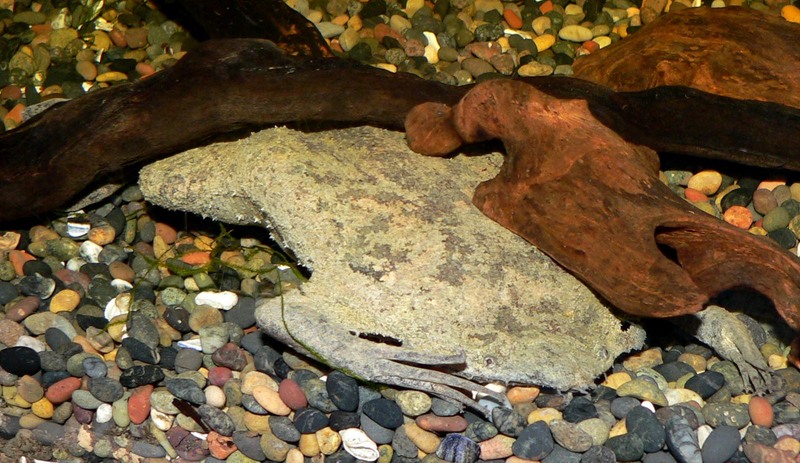common Suriname toad, star-fingered toad (Pipa pipa) Description
English: Photo of Pipa pipa (Surinam toad) at the Steinhart Aquarium in San Francisco
Date June 2005
Author User:Stan Shebs https://commons.wikimedia.org/wiki/User:Stan_Shebs
Source: https://commons.wikimedia.org/wiki/File:Pipa_pipa_1.jpg
The common Suriname toad or star-fingered toad (Pipa pipa) is a species of frog in the Pipidae family found in Bolivia, Brazil, Colombia, Ecuador, French Guiana, Guyana, Peru, Suriname, Trinidad and Tobago, and Venezuela. In Portuguese, it is known as sapo pipa due to its shape, as "pipa" means kite. Its natural habitats are subtropical or tropical moist lowland forests, subtropical or tropical swamps, swamps, freshwater marshes, and intermittent freshwater marshes.
Suriname toads are best known for their remarkable reproductive habits. Unlike the majority of toads, the males of this species do not attract mates with croaks and other sounds often associated with these aquatic animals. Instead, they produce a sharp clicking sound by snapping the hyoid bone in their throats. The partners rise from the floor while in amplexus and flip through the water in arcs. During each arc, the female releases 3 to 10 eggs, which get embedded in the skin on her back by the male's movements. After implantation, the eggs sink into the skin and form pockets over a period of several days, eventually taking on the appearance of an irregular honeycomb. The larvae develop through to the tadpole stage inside these pockets, eventually emerging from the mother's back as fully developed toads, though they are less than 2 cm. Once they have emerged from their mother's back, the toads begin a largely solitary life.
Order: Anura
Family: Pipidae
Genus: Pipa
Species: Pipa pipa (Linnaeus, 1758)
Synonyms: Pipa americana Laurenti, 1768
